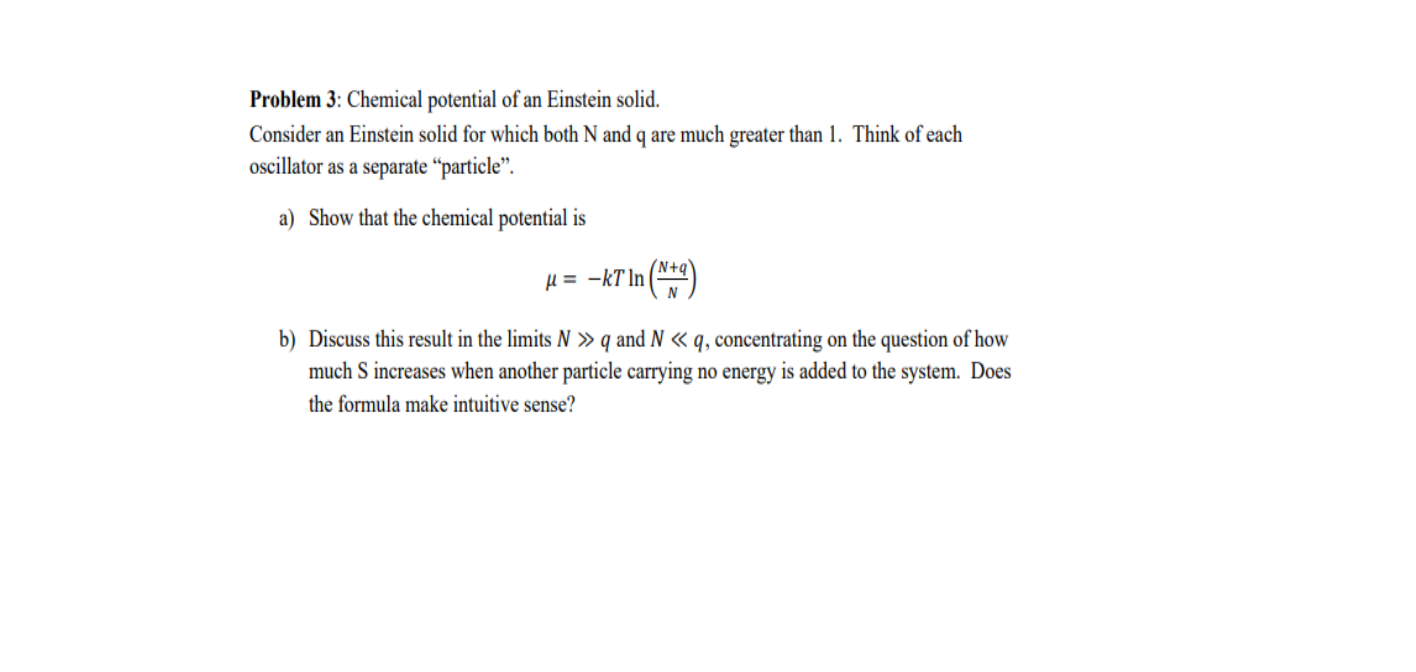Problem 3: Chemical potential of an Einstein solid. Consider an Einstein solid for which both N and q are much greater than 1. Think of each ocillator as a separate “particle". a) Show that the chemical potential is H = -kT In (**e) b) Discuss this result in the limits N » q and N « q, concentrating on the question of how much S increases when another particle carrying no energy is added to the system. Does the formula make intuitive sense?
Problem 3: Chemical potential of an Einstein solid. Consider an Einstein solid for which both N and q are much greater than 1. Think of each ocillator as a separate “particle". a) Show that the chemical potential is H = -kT In (**e) b) Discuss this result in the limits N » q and N « q, concentrating on the question of how much S increases when another particle carrying no energy is added to the system. Does the formula make intuitive sense?
Related questions
Question

Transcribed Image Text:Problem 3: Chemical potential of an Einstein solid.
Consider an Einstein solid for which both N and q are much greater than 1. Think of each
ocillator as a separate “particle".
a) Show that the chemical potential is
H = -kT In (**e)
b) Discuss this result in the limits N » q and N « q, concentrating on the question of how
much S increases when another particle carrying no energy is added to the system. Does
the formula make intuitive sense?
Expert Solution
This question has been solved!
Explore an expertly crafted, step-by-step solution for a thorough understanding of key concepts.
This is a popular solution!
Trending now
This is a popular solution!
Step by step
Solved in 2 steps with 2 images
